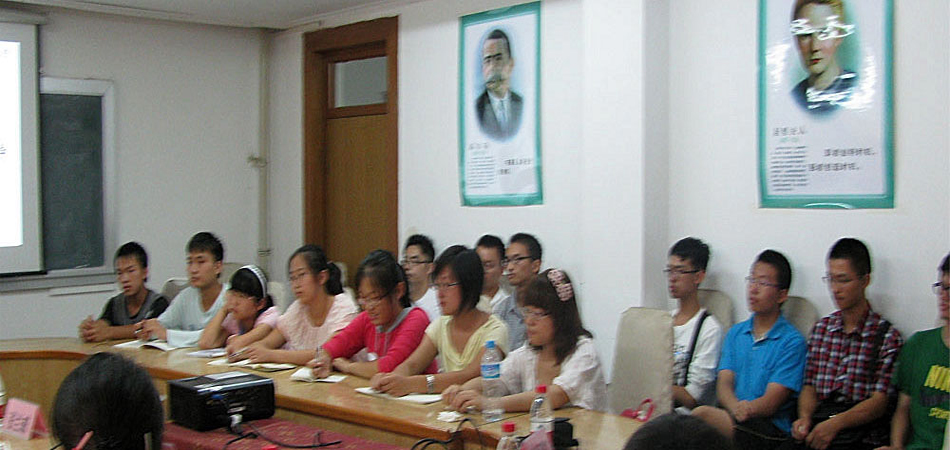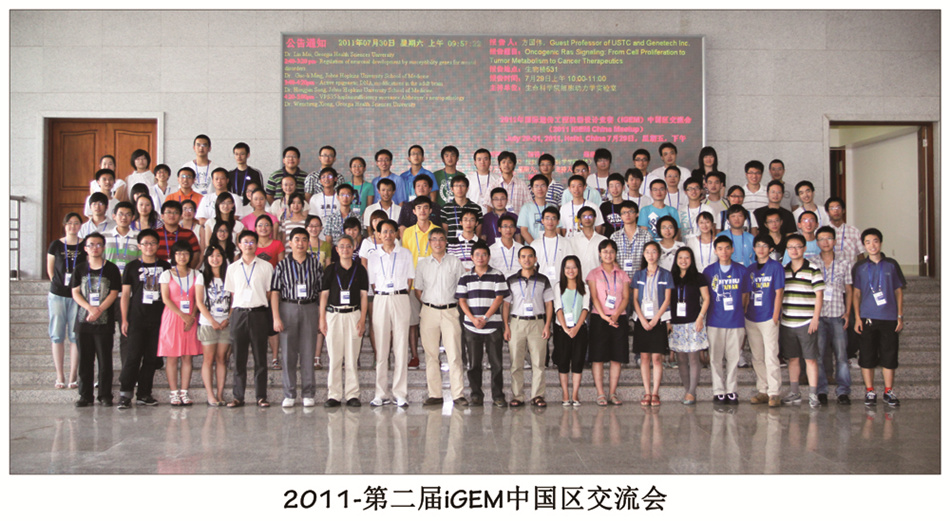Team:HIT-Harbin/Human Practice
From 2011.igem.org
(Difference between revisions)
(→Our Innovation) |
(→Our Innovation) |
||
| Line 5: | Line 5: | ||
*It is the first time that someone tries to minimize the postacidification of yogurt by the means of synthetic biology. We add a pH sensor and a switch which could control the produce of acid in the ''L.bulgaricus''. Compared with traditional methods, this would be more efficient and convenience. There are basically two ways to minimize the postacidification in traditional. The first one is to screen the lactic acid bacteria which produce less lactic acid during the storage. However, it's difficult and it seems we are too strict to the bacteria. Because we need the bacteria produce lactic acid during the fermentation and stop to produce more acid right after that. How could the bacteria know the change of the process without telling them? To solve the problem, we add a pH sensor. The other traditional way focuses on the same point as we mentioned above. It is to add antibiotic substances, such as Nisin, to inhibit the bacteria to grow after the fermentation. But this method is inconvenience for a more step is needed in the process and has some negative effects on the texture and flavor of yogurt. A better way to conquer the difficult is to let the bacteria stop producing acid by itself. So, a switch which could control the produce of acid in the ''L.bulgaricus'' has being designed.<br/> | *It is the first time that someone tries to minimize the postacidification of yogurt by the means of synthetic biology. We add a pH sensor and a switch which could control the produce of acid in the ''L.bulgaricus''. Compared with traditional methods, this would be more efficient and convenience. There are basically two ways to minimize the postacidification in traditional. The first one is to screen the lactic acid bacteria which produce less lactic acid during the storage. However, it's difficult and it seems we are too strict to the bacteria. Because we need the bacteria produce lactic acid during the fermentation and stop to produce more acid right after that. How could the bacteria know the change of the process without telling them? To solve the problem, we add a pH sensor. The other traditional way focuses on the same point as we mentioned above. It is to add antibiotic substances, such as Nisin, to inhibit the bacteria to grow after the fermentation. But this method is inconvenience for a more step is needed in the process and has some negative effects on the texture and flavor of yogurt. A better way to conquer the difficult is to let the bacteria stop producing acid by itself. So, a switch which could control the produce of acid in the ''L.bulgaricus'' has being designed.<br/> | ||
| - | *To minimize the potential negative effects of the genetically modified yogurt, all the genes we have used are from safe | + | *To minimize the potential negative effects of the genetically modified yogurt, all the genes we have used are from safe resources. The ''rcfB'' promoter is found in ''Lactococcus lactis IL1403'', the ''lacR'' gene comes from ''Lactobacillus. delbrueckii'' subsp. ''lactis'', the ''nisI'' gene comes from the ''Lactococcus lactis''. These lactic acid bacteria have been widely used in fermentation industry for a long time and are generally regard as safe(GRAS). Besides, the collagen gene comes from the α<sub>1</sub> chain of human collagen type Ⅲ (ColⅢ). Furthermore, we have designed two food-grade vectors with Nisin resistance gene instead of antibiotic resistance gene.<br/> |
Latest revision as of 02:32, 6 October 2011
Our Innovation
- It is the first time that someone tries to minimize the postacidification of yogurt by the means of synthetic biology. We add a pH sensor and a switch which could control the produce of acid in the L.bulgaricus. Compared with traditional methods, this would be more efficient and convenience. There are basically two ways to minimize the postacidification in traditional. The first one is to screen the lactic acid bacteria which produce less lactic acid during the storage. However, it's difficult and it seems we are too strict to the bacteria. Because we need the bacteria produce lactic acid during the fermentation and stop to produce more acid right after that. How could the bacteria know the change of the process without telling them? To solve the problem, we add a pH sensor. The other traditional way focuses on the same point as we mentioned above. It is to add antibiotic substances, such as Nisin, to inhibit the bacteria to grow after the fermentation. But this method is inconvenience for a more step is needed in the process and has some negative effects on the texture and flavor of yogurt. A better way to conquer the difficult is to let the bacteria stop producing acid by itself. So, a switch which could control the produce of acid in the L.bulgaricus has being designed.
- To minimize the potential negative effects of the genetically modified yogurt, all the genes we have used are from safe resources. The rcfB promoter is found in Lactococcus lactis IL1403, the lacR gene comes from Lactobacillus. delbrueckii subsp. lactis, the nisI gene comes from the Lactococcus lactis. These lactic acid bacteria have been widely used in fermentation industry for a long time and are generally regard as safe(GRAS). Besides, the collagen gene comes from the α1 chain of human collagen type Ⅲ (ColⅢ). Furthermore, we have designed two food-grade vectors with Nisin resistance gene instead of antibiotic resistance gene.
Human Practice
With rapid development in synthetic biology more and more iGEMers take part in the family of iGEM. Our project team was made of 12 students. Our main goal was to broaden our sight, and enjoy the process and success. It’s of great pleasure that everybody brought in full of creative imagination, got together with distinctive ideas in the brain-storm session, and then experimented a variety of methods to solve the problems and complete the project. We treated the iGEM competition as a precious opportunity to build good cooperative relationships with each other. Collaboration is an important character of any success. Synthetic biology impels us to jump out of the constraint of traditional ideas, and think from a different perspective. Furthermore synthetic biology provides us with a new routine to analyze the current problem and solve it. These experiences can’t be acquired by just sitting in the classroom and listening to the teachers. In the meanwhile, synthetic biology, like molecular biology, also brings about ethical concerns. This particular feature requires us to shoulder the responsibility to promote synthetic biology to the general public, except for doing mere scientific research, so that more people will know the new trend and make their contributions to the development of it.
In order to accomplish our goals, we have launched a series of activities: designing and distributing brochures on iGEM, making presentations about iGEM for the freshmen and joining iGEM 2011 China Meetup.
Brochures on iGEM
To promote a better understanding of synthetic biology to the general public and arouse their interest on this subject, we have integrated various disciplines designed a piece of informative brochure, and distributed to students and teachers.




Presentations for the freshmen
A lecture has been held to introduce synthetic biology to freshmen on campus. As they lacked related knowledge, we introduced basic principles and made brief explanations about synthetic biology. We placed great emphasis on the advantages of synthetic biology hoping that they would have a better awareness of the potential of this new and fascinating subject. They were positive during the session, and in the end, it was exciting to see their great interest towards synthetic biology. The team was surprised to find that some of them even wanted to devote themselves to the area of biology. Maybe, one of them will be a member of our iGEM family, becoming even an expert in the future.

Attending China Meetup
Considering our lack of experience, the team needed a platform for communication and experience sharing. Therefore, the team attended iGEM 2011 China Meetup held in USTC July 29-31, 2011, which provided us with the platform. During the conference, well-known experts elucidated the developing trend of synthetic biology, and some insightful representatives made theme reports and reviews. We displayed our current progress, and asked for help on the solution of the problems we were faced with. All attendants agreed that iGEM competition would be the breeding ground for the next generation synthetic biologists.

 "
"